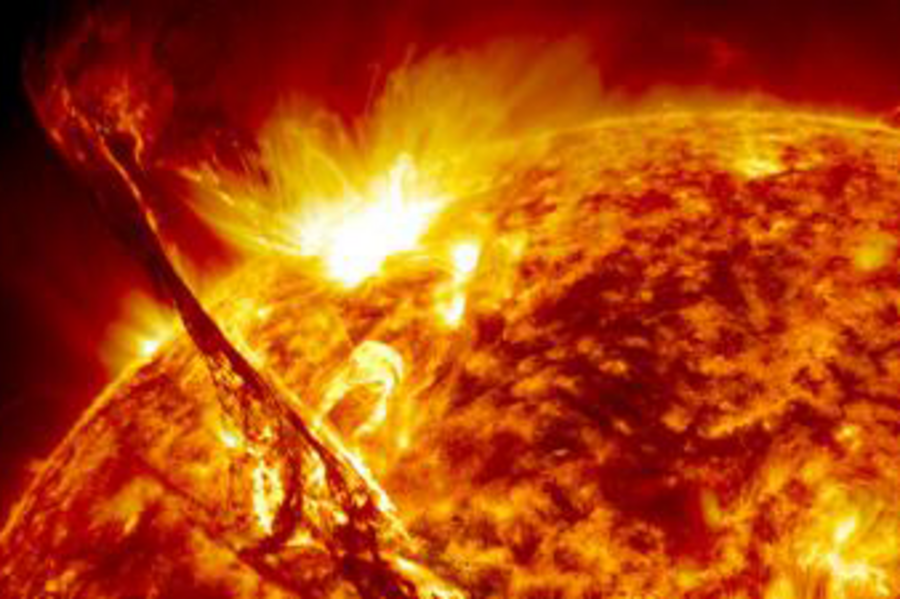Mystery solved: Scientists trace radio bursts to a galaxy far, far away
Loading...
For nearly a decade, scientists have been perplexed by detected blasts of radio waves that come from somewhere in the universe. Now, for the first time, a team has been able to trace the origins of one of these flashes – to a galaxy 6 billion light years away.
Fast Radio Bursts, or FRBs, are bright radio pulses that last just a few milliseconds. Although scientists believe thousands occur every day, only 16 have been detected, and until now, no one was sure what causes them.
But studying the mysterious radio waves would allow astronomers better understanding of the evolution of the physical universe and the matter that comprises it. So, when the authors behind this recent study were able to quickly track down the location of a FRB after it was detected by the Commonwealth Scientific and Industrial Research Organization's (CSIRO) 64-meter Parkes radio telescope in Australia last April, it was a groundbreaking achievement.
"In the past FRBs have been found by sifting through data months or even years later," lead author Evan Keane, an astronomer with the Square Kilometer Array Organization, said in a statement. "By that time it is too late to do follow up observations."
Now, thanks to his system of email alerts based on a system that runs data from the Parkes telescope to a supercomputer, Mr. Keane and his colleagues are able to also immediately look into the detected FRBs.
By observing this particular FRB’s afterglow using the Australia Telescope Compact Array and the Subaru Telescope in Hawaii, they found the source to be a very old, elliptical galaxy. Because old galaxies rarely make new stars, Keane and his team projected that the precise cause of the FRB may be from the collision of two neutron stars.
This discovery, published Wednesday in the journal Nature, is “the measurement the field has been waiting for,” says astronomer Kiyoshi Masui of the University of British Columbia in Vancouver, Canada,
It’s probable, however, that FRBs derive from an assortment of causes. Last December, for instance, Dr. Masui and his colleagues detected an FRB that may have originated from a young neutron star with an intense magnetic field.
But now, knowing the distance between an FRB and Earth will allow Keane and his team to examine how much matter it traveled through and shed light on one of the biggest prevailing mysteries of the universe: Most of the mass-energy content of the cosmos – 95 percent – is thought to be dark energy and dark matter, and out of the remaining five percent that consists of matter that we understand, only half has been accounted for.
The path of this FRB could point to the missing matter that is indeed in existence.
"The good news is our observations and the model match, we have found the missing matter," Keane said in a statement. "It's the first time a fast radio burst has been used to conduct a cosmological measurement."








